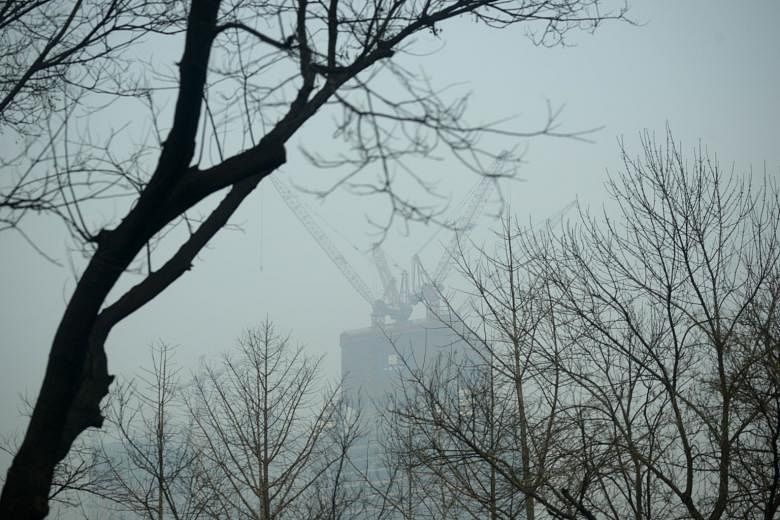BEIJING • Air quality in Beijing has improved over the past two years, a senior environmental official said yesterday, despite a dramatic three-week episode of hazardous smog that drew worldwide attention late last year.
The thick smog that shrouded the Chinese capital for 22 days over November and December had distorted the picture of Beijing's environmental record since 2014, city official Yu Jianhua told reporters.
"Many people feel things got worse because the impression of the pollution in December remains very deep," said Mr Yu.
The authorities have blamed the worsening of air quality on Beijing's "winter heating season", which began on Nov 15, reported the Wall Street Journal.
Beijing is typically hit by harsh winter weather, but the past few months have been some of the coldest in decades in the city, which relies heavily on coal-based heating.
Over a span of 30 days, Beijing residents suffered three separate "airpocalypses" - one from Nov 26 to Dec 1, another from Dec 5 to Dec 14 and a third from Dec 18 to Dec 24, according to China's official Xinhua news agency.
Mr Yu, a director of the Beijing Municipal Environmental Protection Bureau, said the impression would have been different if the same number of heavy smog days had been scattered over several months.
Concentrations of sulphur dioxide, a gas that can cause breathing difficulties, fell 49 per cent in Beijing from 2013 to 2015, while particulate matter smaller than 2.5 micrometres, a dangerous airborne component of smog, fell 10 per cent, he said.
Environment Minister Chen Jining said on Thursday that weather conditions, including unusually high humidity and low wind speeds, had worsened the smog last year, but he added that the authorities still needed to respond better to emergencies.
Mr Chen also announced a new plan that targets Beijing, Tianjin and four neighbouring cities with tough restrictions in an effort to curb severe smog in the northern region.
The six cities, which also include Baoding, Langfang, Tangshan and Cangzhou, will have a unified response against severe air pollution by March 15, the first step in coordinating regional efforts to determine alert levels and to issue responses.
"Under the unified response system, the six cities will adopt the same alert - red or orange - and follow the same standards instead of issuing alerts separately," Mr Chen said.
The unified response standards will eventually cover the whole region, he added.
China has been stepping up efforts to combat air pollution in recent years. A revised environmental protection law came into effect at the start of last year with the aim of strengthening inspectors' powers and increasing the range of punishments for lawbreakers.
Hundreds of independent environmental monitoring stations have also been set up nationwide.
REUTERS

